Beginner to circuit building here. I tried to build the following toggle switch using one side of a TC4013BP [EDIT: I'm using a 9 V power supply, why did I write 12V? Sorry!]:
(I know, white wires with a white breadboard, great choice....)
This is the original design:
(original plan here: https://pfnicholls.com/Electronics/Dtype.html)
I stuck it on a breadboard (picture above), put a 9 V across the high and low (as well as powering the chip on the same rails, as shown) The problem is that it doesn't toggle - the LED turns on when I push the switch, and then turns off again when I release it.
My understanding is that when I hit the clock, data gets sent to Q, and Q-not gets set to opposite that, ready for the next cycle. If we start at Q=0, hitting the clock turns the LED on (that happens in my circuit), and sets Q-not and data to low. I hit it again, and data (now low) gets sent to Q, turning off the LED.
I guess I don't understand what the voltage at Q-not is at the beginning, but still - the LED does light up when the switch is engaged, it just doesn't stay on when the clock turns off.
I think that's how the circuit works - is that correct?



